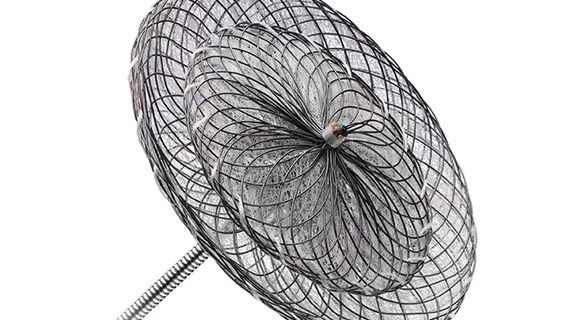SCAI publishes consensus document on PFO closure
An expert consensus statement published by the Society for Cardiovascular Angiography and Interventions (SCAI) offers guidance for the safe and effective use of patent foramen ovale (PFO) closure devices to prevent recurrent stroke.
Nearly one-quarter of the population is estimated to have a PFO, a hole between the top left and right chambers of the heart. Recent evidence demonstrates that closing this gap with newly approved devices more effectively cuts the risk of recurrent stroke among those who have experienced a cryptogenic stroke, a brain infarction from unknown causes which usually occurs in the absence of traditional stroke risk factors.
“Publication of high‐quality evidence from randomized clinical trials and the subsequent FDA approval of two devices for percutaneous PFO closure is expected to increase the volume of PFO closure procedures not only in the United States but worldwide,” Eric Horlick, MD, the chair of the writing group, and colleagues wrote in Catheterization and Cardiovascular Interventions. “As this technology is disseminated broadly to the public, ensuring the safe and efficacious performance of PFO closure is essential to mitigate risk and avoid unnecessary procedures.”
The approved devices include the Amplatzer PFO Occluder (October 2016) and the Gore Cardioform device (March 2018). Previously, PFO closure was limited to off-label devices, sometimes under a humanitarian device exemption, or to participants in clinical trials.
Even though the technique is expected to become more popular following these developments, Horlick et al. noted PFO closure is still a “nascent technology.” Therefore, their recommendations rely on expert consensus and the evidence base that’s emerged in recent clinical trials. The entire writing committee reviewed each recommendation, and a majority vote was required for each one to be included.
The document shares appropriate periprocedural imaging modalities and the skillsets operators must have to perform PFO closure—including technical expertise in other structural/congenital interventions, the avoidance and management of adverse events, access route considerations and specific procedural volume requirements for operators and facilities to achieve and maintain the necessary expertise to offer PFO closure.
It also provides guidelines for patient selection and shared decision-making, and recommends a multidisciplinary team be in place including a stroke neurologist, hematologist, structural and/or adult congenital interventional cardiologist, noninvasive imaging physician, anesthesiologist and cardiac surgeon.
“As experience with PFO closure grows, these recommendations will be revised and updated based on expanded expertise and published data,” the authors wrote. “However, the recent FDA approval of two percutaneous PFO occluder devices underscores the need to make initial recommendations now to provide a starting point for future modifications.”
The American Academy of Neurology also had representatives on the writing group and affirmed the document as an educational tool for neurologists, according to the paper.

